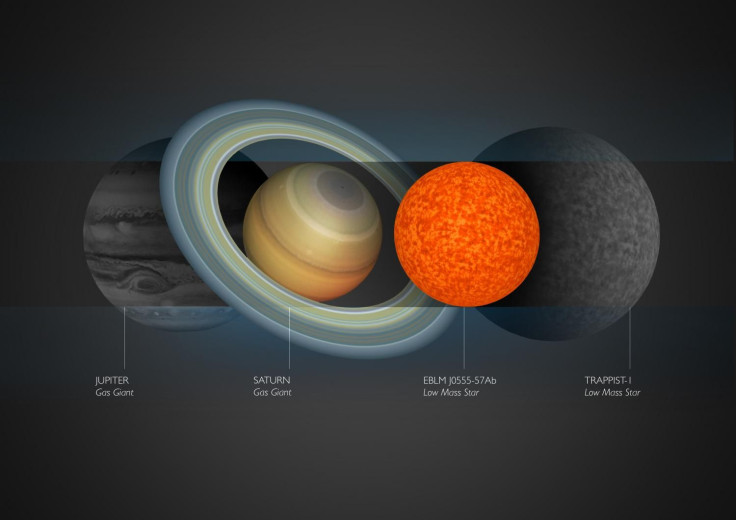Smallest Star Ever: Scientists Find Star Smaller Than Some Planets

Astronomers have found a star so small that even some planets are larger. It is the smallest one ever discovered and it teaches scientists more about the little stars around which potentially habitable planets form throughout the universe.
The star, called EBLM J0555-57Ab, is just a little bit larger than Saturn, the ringed gas giant in the outer solar system, according to a study in Astronomy & Astrophysics. But in such a small space, it contains a mass similar to other small stars. Being so compact, it is one of the densest stars out there, which means its gravitational pull is intense: about 300 times stronger than the pull of Earth’s gravity on this planet’s surface.
Read: Star Collision Creates Object Colder than Space Itself
“The star is likely as small as stars can possibly become, as it has just enough mass to enable the fusion of hydrogen nuclei into helium,” the University of Cambridge explained in a statement on the research, referring to the same process that takes place within the sun and generates the energy we enjoy on Earth. “If it were any smaller, the pressure at the centre of the star would no longer be sufficient to enable this process to take place.”
In that case, it would have been a brown dwarf, an object that is kind of a halfway point between a planet and a star. Typically, these objects are bigger than Jupiter — the biggest planet in our solar system — but smaller than the smallest stars. Authorities like NASA have previously classified brown dwarfs as being between 15 times the mass of Jupiter and 75 times the mass of Jupiter.
EBLM J0555-57Ab surpasses that mass and thus fits the bill of a small star on that front. Where it bends the rules is in its diameter, which is similar to that of Saturn, the second largest planet in the solar system.
“Our discovery reveals how small stars can be,” lead study author Alexander von Boetticher said in the Cambridge statement. “This star is smaller, and likely colder than many of the gas giant exoplanets that have so far been identified.”
The star is part of a binary system, meaning that both it and its much larger companion orbit around the same point in space. Being part of a binary system is what enabled scientists to locate this tiny star, according to the university: The researchers observed it passing in front of the companion, an observation technique that is usually used to find planets.
The pair is about 600 light years away from Earth.
Although this is the smallest star ever recorded, small stars like this one “are the most common stellar objects and prove to be excellent candidates for the detection of Earth-sized planets,” the study notes.
Even though they are so abundant, small stars remain mysterious because their size makes them difficult to detect and study.
Read: Comparing the Coolest Habitable Exoplanets
But in order to learn more about these intriguing Earth-sized exoplanets, we also have to know more about the bright objects they orbit: “Determining the properties of exoplanets requires an accurate knowledge of their host star parameters, in particular the stellar mass,” according to the study.
One example of Earth-sized planets orbiting a small star is the TRAPPIST-1 system, which consists of seven rocky planets about the size of ours orbiting around a dwarf star. Perhaps three of the planets are located within what’s known as the habitable zone, the region around a star that is just the right distance to receive the amount of stellar energy necessary to support liquid water — any farther away and the water would turn to ice; any closer and it would boil into gas.
The newly discovered star has a mass that is similar to TRAPPIST-1, but its radius is about 30 percent smaller, according to the university.
“The smallest stars provide optimal conditions for the discovery of Earth-like planets, and for the remote exploration of their atmospheres,” co-author Amaury Triaud said in the statement. “However, before we can study planets, we absolutely need to understand their star; this is fundamental.”
© Copyright IBTimes 2024. All rights reserved.





















